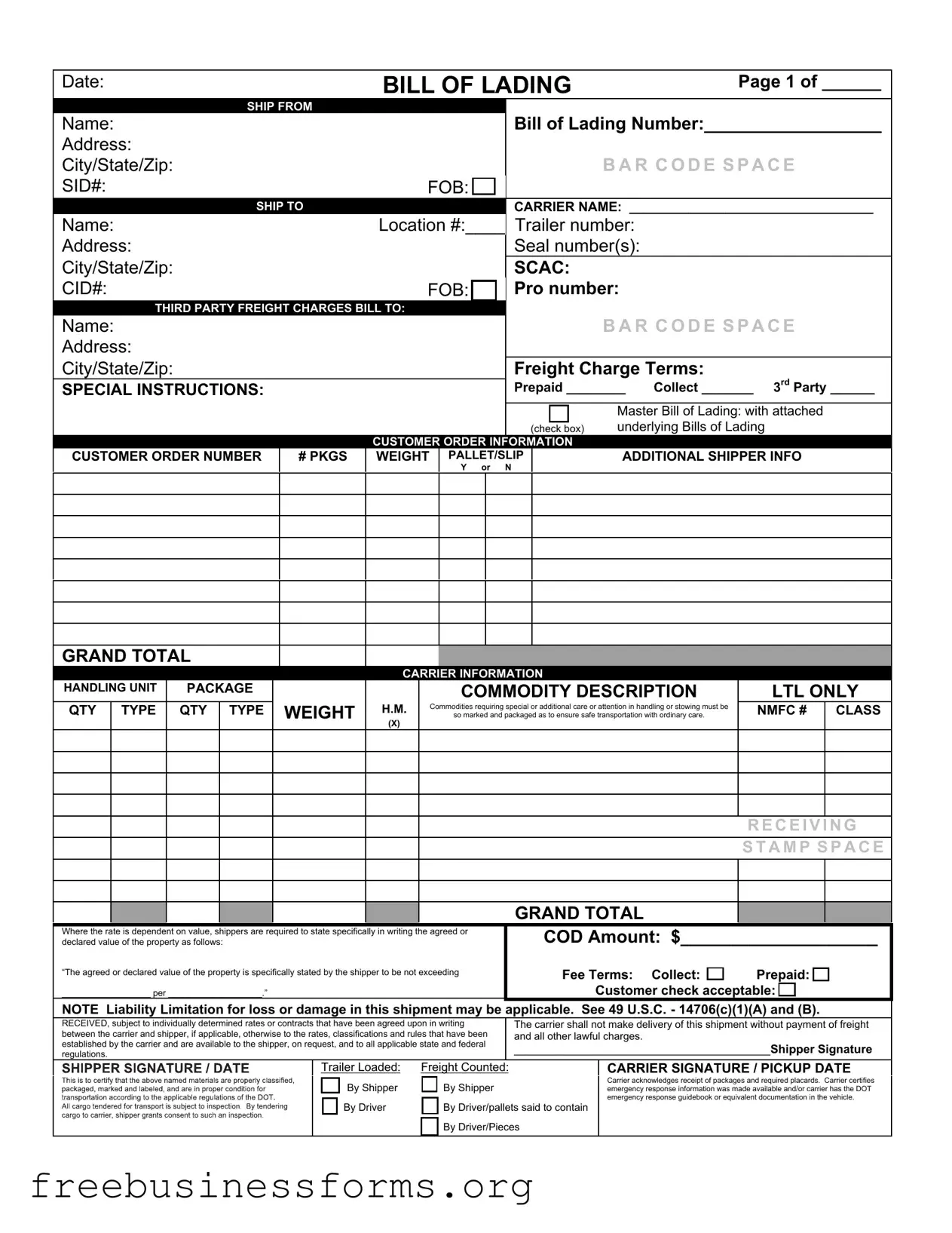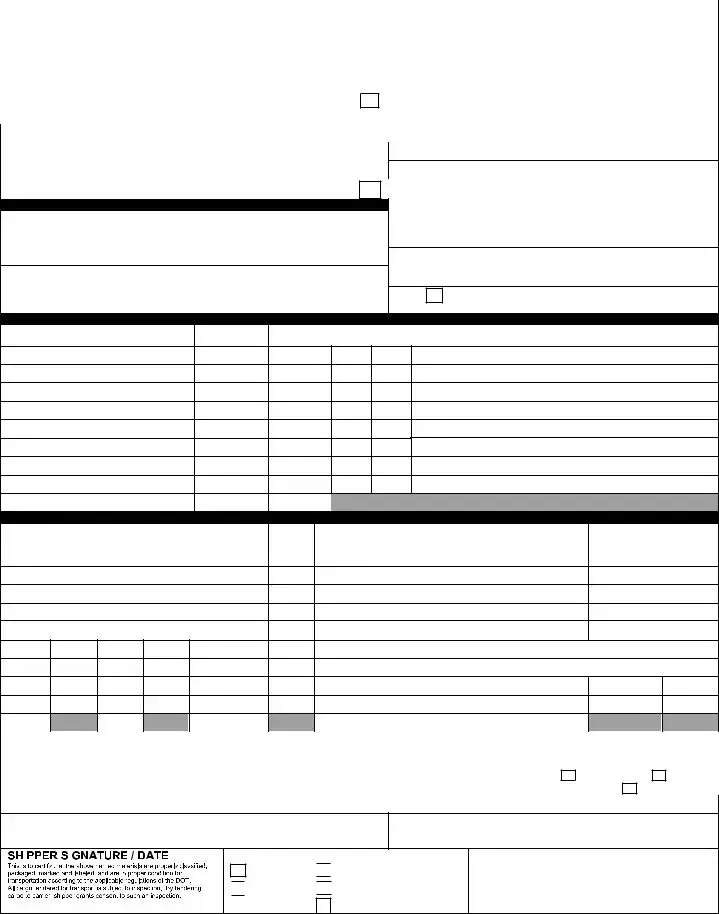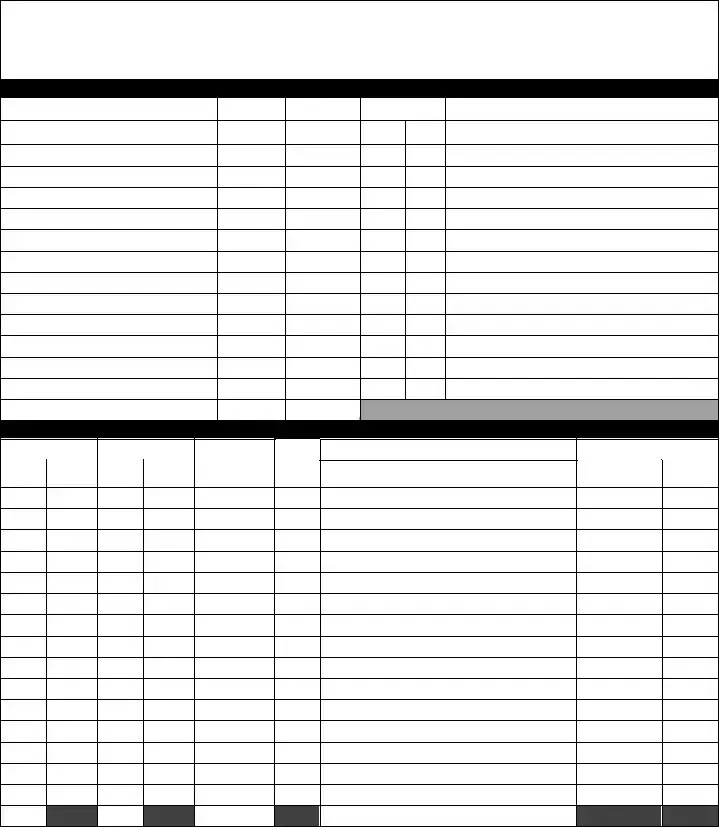The Bill of Lading with a Supplement form serves as a crucial document in the shipping and transportation industry, facilitating the movement of goods from one location to another. It acts as a receipt, a contract of carriage, and a document of title, ensuring that all parties involved understand their rights and responsibilities. This form typically includes essential information such as the names and addresses of the shipper and consignee, a detailed description of the goods being transported, and the terms of the shipment. Additionally, the Supplement section allows for the inclusion of extra details, such as special handling instructions or additional terms that may not be covered in the main Bill of Lading. By providing a comprehensive overview of the shipment and any specific requirements, this form helps to minimize misunderstandings and disputes between shippers, carriers, and receivers. Understanding the nuances of the Bill of Lading with a Supplement is vital for anyone involved in logistics, as it not only streamlines the shipping process but also ensures compliance with legal and regulatory standards.


 to certify that the above named materials are properly classified, packaged, marked and labeled, and are in
to certify that the above named materials are properly classified, packaged, marked and labeled, and are in proper condition for transportation according to the applicable regulations of the DOT.
proper condition for transportation according to the applicable regulations of the DOT.
 By Shipper
By Shipper
 By Driver
By Driver 
 By Driver/pallets said to contain
By Driver/pallets said to contain